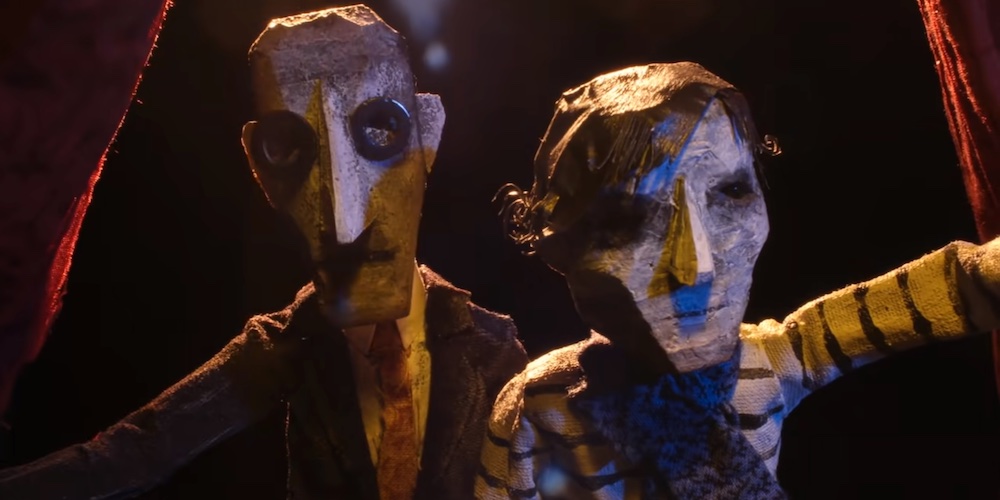Earlier this week, I got to watch New Orleans filmmaker Randy Mack experience The Sparks Brothers live on Twitter. It went something like this:
5 min: “Hilarious Mockumentary”
10 min “Wait, is this real?”
15 min “Well-doctored vintage footage—funny!”
25 min “OK, this must be real.”
30 min “haha ‘Muff Winwood’ what a sick parody”
35 min “fuck I think it’s real?”
45 min “*head explodes*”
Yes, Randy. Sparks was, and is, a real band. They are not, as everyone inexplicably thought, British, but rather from Southern California. Brothers Ron and Russell Mael have been making music together for 50 years. Ron is a keyboard virtuoso with a deadpan scowl and a wicked sense of humor. Russell is taller, blessed with more conventional good looks, and a precisely controlled voice that can be Freddie Mercury operatic or Robert Plant screamy, according to the needs of the song. They made their recording debut in 1967 as Halfnelson with the little-heard “Computer Girl,” which got the attention of legendary prog-rock musician and producer Todd Rundgren. The reason most people think they’re from the UK is that they were discovered on the right side of the pond before they were accepted in America. In 1974, they appeared on the classic BBC show Top of the Pops to sing “This Town Ain’t Big Enough for the Both of Us,” and soon the song was burning up the charts.

It’s tough to say what Sparks sounds like, because they radically change their sound every other album, and they are reportedly now working on their 25th full length. They started out as Pink Floyd-like psychedelia, but were well-positioned to go glam because of Russel’s rock god locks and Ron’s uncanny ability to absorb new music and immediately create a synthesis that’s smarter and better than the inspiration. The biggest coup of their career was when they almost single-handedly created the synth pop branch of New Wave after hearing Donna Summer’s “I Feel Love” and cold-calling Italo-disco producer Giorgio Moroder. The brothers fired their band, bulked up on synthesizers and drum machines, and made the album No. 1 in Heaven. “The Number One Song in Heaven” and “Beat the Clock” became huge hits in Europe and inspired a legion of musicians to put down their guitars and make music from bloopy noises.
The Sparks Brothers is director Edgar Wright’s first documentary. The Sparks superfan is better known for his stylish, groundbreaking pop confections like Scott Pilgrim vs. the World and Shaun of the Dead. Wright weaponized his musical obsession in 2017 with the balletic car chase movie Baby Driver. His restless, inventive visual style fits perfectly with Sparks’ wry, heady music. His energetic editing keeps the proceedings light and eminently watchable throughout its two-hour-plus running time.
That sounds like a long movie, but there’s a lot of story to cover, and the Mael brothers, now in their seventies, are endlessly fascinating characters. Wright is not alone in the Sparks cult. They are, as the tagline goes, your favorite band’s favorite band. From Beck to Björk, Duran Duran to the Red Hot Chili Peppers, author Neil Gaiman to comedian Patton Oswalt, everyone wants to weigh in on the brilliance of the Maels.

Sparks, while they perpetually hung around on the musical B list, made frequent television appearances in the ’70s and ’80s, which means Wright has a ton of archival footage to work with. Especially entertaining are the duo’s appearances on American Bandstand. At one point, Dick Clark asks “Who is the oldest?” to which Ron deadpans “You are.” For some of the juicier stories, which happened without cameras rolling, Wright resorts to animating the visuals. This is pretty standard for documentary recreations these days, but the director, like the band, keeps changing styles. Some of the stories are told in stop motion, while others are hand-drawn animation and CGI.
Why, exactly, Sparks were perpetual also-rans in America is a good question. Wright takes a couple of stabs at answering. Maybe it was Ron’s Hitler mustache. (It’s a Charlie Chaplin mustache, Ron would insist.) Maybe they were just too smart for the audience, or they never stuck around in the same style long enough for their following to grow beyond the loyal cult. But as the film progresses, that question becomes less and less interesting. What makes The Sparks Brothers a must-see is the brothers’ impish wit, ample charisma, and bottomless well of unique talent. And they’re still at it. In July, the musical Annette the boys wrote and scored, starring Adam Driver and Marion Cotillard, will open the Cannes Film Festival. It’s Sparks’ world; we just live in it.
